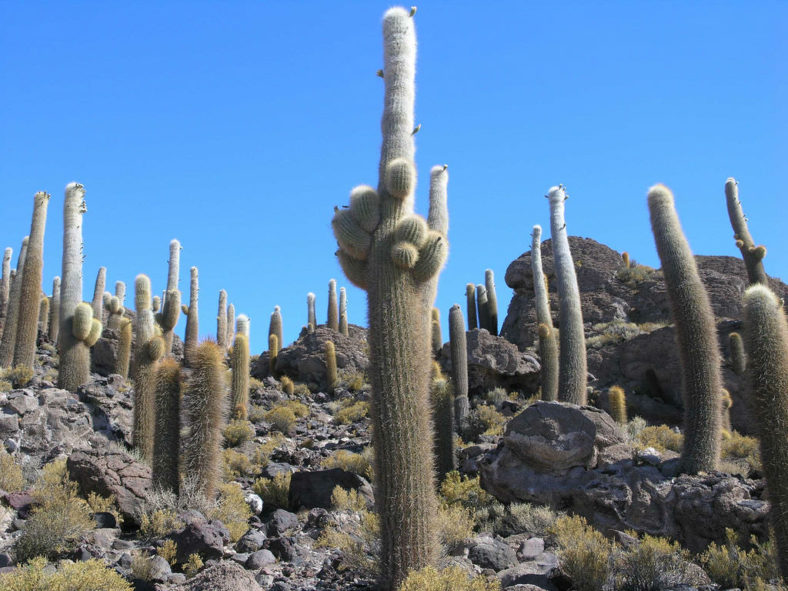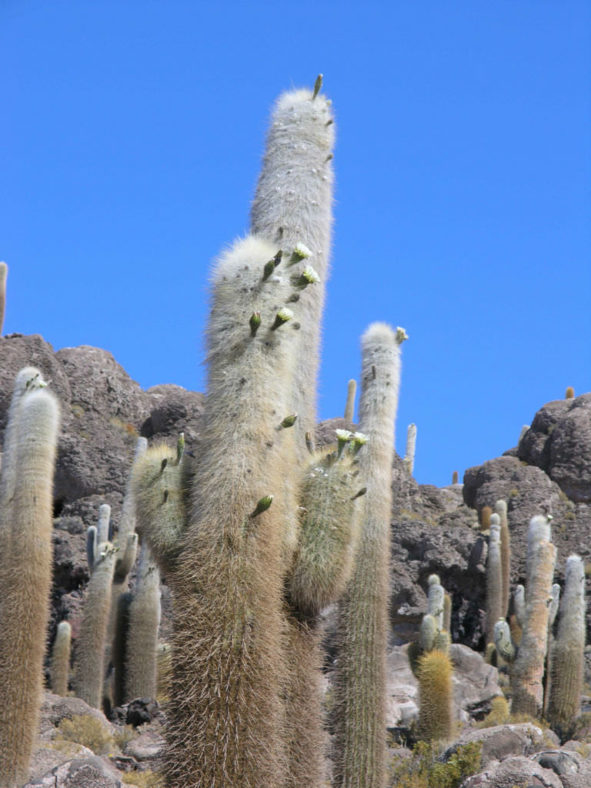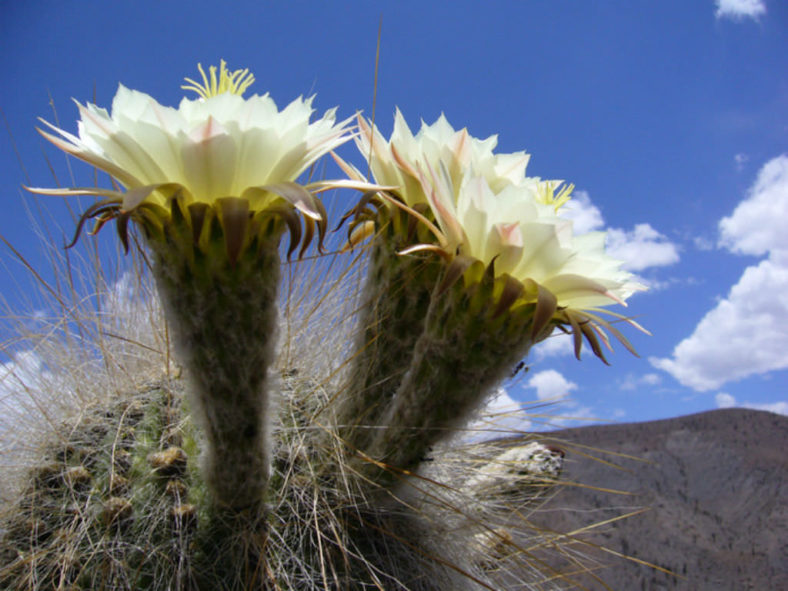Scientific Name
Leucostele atacamensis subsp. pasacana (F.A.C.Weber ex Rümpler) Schlumpb.
Common Name(s)
Pasacana Tree Cactus, Pasakana, Cardon, Cardon Grande, Cavul
Synonym(s)
Cephalocereus pasacanus, Cereus pasacana, Echinopsis atacamensis subsp. pasacana, Echinopsis pasacana, Helianthocereus pasacanus, Pilocereus pasacanus, Trichocereus atacamensis subsp. pasacanus, Trichocereus pasacana
Scientific Classification
Family: Cactaceae
Subfamily: Cactoideae
Tribe: Cereeae
Subtribe: Trichocereinae
Genus: Leucostele
Etymology
The varietal epithet "pasacana" (pronounced "pas-uh-KAN-uh") is a local vernacular name for the species, which has been accepted into botanical nomenclature.
Origin
Leucostele atacamensis subsp. pasacana is native to Argentina and Bolivia.
Description
Leucostele atacamensis subsp. pasacana, formerly known as Echinopsis atacamensis subsp. pasacana, is a large cactus with a columnar habit, sometimes branching to become tree-like. This subspecies differs from Leucostele atacamensis subsp. atacamensis, which is usually unbranched and less tall. The cylindrical stems can grow up to 33 feet (10 m) tall and 2.6 feet (80 cm) in diameter.
The flowers are rose-white and appear from spring to summer on the sides of the stems. They can reach a length of up to 6 inches (15 cm). The edible fruits are dark green, densely covered with hairs, and can grow up to 2 inches (5 cm) long.

Hardiness
USDA hardiness zone 8a to 10b: from 10°F (-12.2°C) to 40°F (4.4°C).
How to Grow and Care
If you can grow cacti and succulents successfully, you can likely grow the Echinopsis species without much trouble. Like many cacti, they prefer a drying period between waterings, even when slightly wilted. When you water, however, you should water deeply. The plant will noticeably plump up. The cactus mustn't be exposed to prolonged dampness and standing water. Never let your cactus sit in a dish of water. Lastly, apply fertilizer during the growing season for the best results.
Echinopsis can easily be rooted from offsets, which tend to cluster around the mother plant's base. Cut offsets close to the stem, at the narrowest possible place. When rooting cacti from cuttings, let the fresh cutting dry out slightly on a paper towel, and cut the cacti at the narrowest place possible. After a few days to a few weeks, depending on the size of the cut surface, it should have dried out and formed a callous or slightly rough opening. Once the callous has formed, place the cutting in a rooting mixture of fast-draining cacti soil.
See more at How to Grow and Care for Echinopsis.
Links
- Back to genus Leucostele
- Succupedia: Browse succulents by Scientific Name, Common Name, Genus, Family, USDA Hardiness Zone, Origin, or cacti by Genus
Photo Gallery
Click on a photo to see a larger version.

